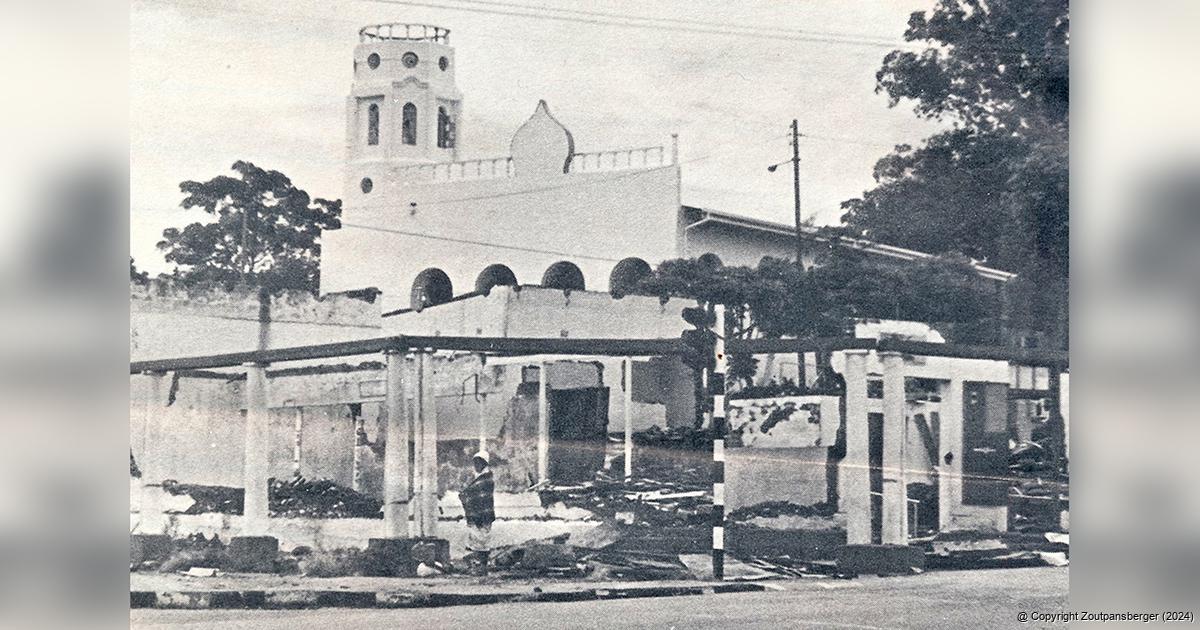

ADVERTISEMENT:

Because of a stipulation in legislation, the Louis Trichardt Town Masjid was spared demolishment in the early 1970s when the town’s Indian community was forcefully removed from the town centre and relocated to Eltivillas. This photo was taken in 1980/81. In the foreground, the demolishment of Indian shops is taking place, but luckily, the mosque survived this terrible part of South African history. Photo: Dopper Kruger.
Louis Trichardt Town's Masjid an historic place of prayer
Date: 21 October 2023 By: Andries van Zyl
For the Zoutpansberger’s 15th photo treasure hunt, we decided to cast the net a little wider over the region’s rich cultural heritage. The correct answer to the photo clue given was that of Louis Trichardt’s oldest Muslim mosque, the Louis Trichardt Town Masjid in Kruger Street. The mosque has its origins with the first Muslim families who moved into the Zoutpansberg in the late 1800s, around the same time as the establishment of the town of Louis Trichardt in 1899.
According to Johann Tempelhoff’s book Townspeople of the Soutpansberg: A centenary history of Louis Trichardt 1899-1999, the land on which the mosque was erected was originally purchased in 1928. “As a result of the fact that Section 2 of Act No. 37 of 1919 forbade the church to register the land in its name, it was registered in the name of the Government on the advice of the Minister of Lands. In 1937, the Cassim Suliman family donated an amount of £1,800 towards paying the costs for the construction of the church,” Tempelhoff writes.
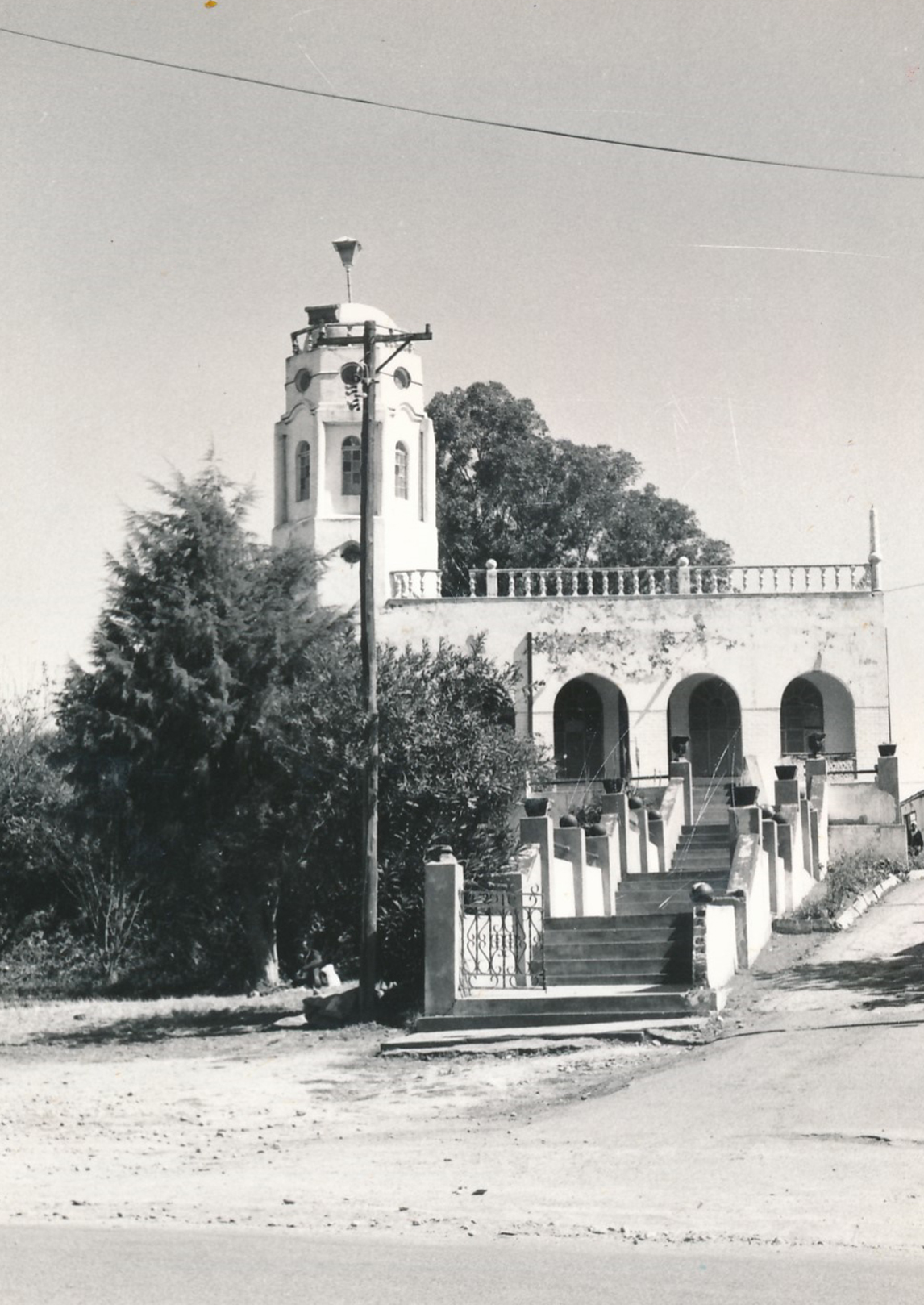 |
|
Another angle of the Louis Trichardt Town Masjid. The photo was taken around the 1980s. Photo: Dopper Kruger. |
At that stage, most people were living in harmony with each other, but this was all about to change in the early 1950s with the introduction of the Group Areas Act. “At one stage when there were indications that the Group Areas Act was to be introduced, the congregations thought of absconding the land. Although there was not a fully fledged mosque on the property, there was, however, a prayer room where the believers assembled daily for their prayers. The Council refused to give its approval. In 1954, the Council gave its approval for the construction of the mosque. There did exist at the time the possibility that the congregation could be told to vacate the church in terms of the Group Areas Act, but it did not occur. In 1955-6, the mosque was taken into use,” Tempelhoff writes.
Louis Trichardt resident Dr Azim Ayob remembers the years leading up to the building of the mosque through the stories told by his grandfather, the late Ismail Ayob. His grandfather used to lead the prayers in the little room prior to the mosque’s establishment and the full-time engagement of an Imam.
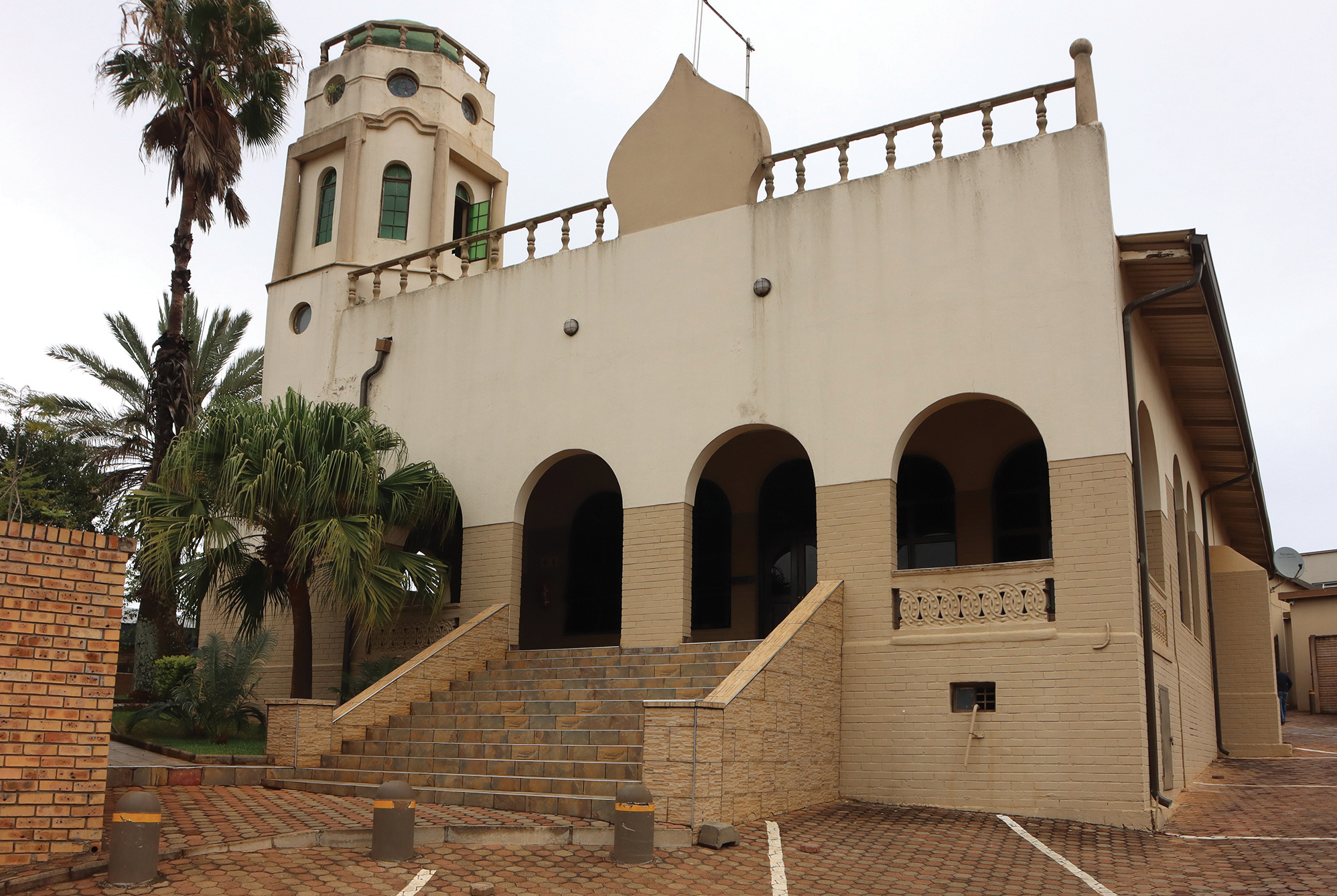 |
|
The Louis Trichardt Town Masjid in Kruger Street today. |
The Louis Trichardt Town Masjid is steeped in tradition over its almost 70-year history. “All the families who lived in this town contributed to the building of the mosque, either financially and otherwise,” said Azim. Among others, these included the Hajee Aboo, Ahmed Finger, AV Mahomed, Ayob Abba, Hussain Ayob Kurtha, Osman Ladha, Joosub Kalla, Rasool, Aboo Dada, Tayob Cassim, Cassim Suliman, Mansuli, Asvat, Kharbai, and Chaya families. “I can recall my late dad telling me about a road trip that my late grandfather, Chothubai Rasool and a few others made to Johannesburg to see businesspeople on the Witwatersrand that could also assist with some funding toward the building project. Chothubai Rasool served as chairman of the Louis Trichardt Muslim Jamaat in the very early years and Ismail Ayob served as secretary under Chothubai. The Rasool family in and around 1976 left South Africa and settled in Canada,” said Azim.
A truly sad part of the country’s history, and thus also Louis Trichardt’s history, was the previous South African government’s apartheid laws and ideology of segregation. The 1970s were especially tough as this marked the struggle against the national government’s efforts to have the Indian community moved out of the centre of Louis Trichardt into an area designated for them in a piece of open veldt. The process started in 1970, when 53 houses were built at a cost of R1.87 million in an area later known as Eltivillas. Two years later, all the Indian residents had to move into these houses and had to be out of town. The Indian traders fought hard to keep their businesses, but in 1978, these were also expropriated.
Not everyone supported this forced removal. The Louis Trichardt Chamber of Commerce conducted a census and joined forces with the Indian Association to oppose the move to Eltivillas. “...91% of the 6,500 Whites and 98% of the Indians wanted the businesses to remain in the town,” Mannetjie Wolmarans, chairman of the Louis Trichardt Chamber of Commerce, told a reporter of the Sunday Express during an interview in June 1978. “Indians have been citizens of Louis Trichardt since 1896, and colour has never been an issue in our town,” Charlie Ayob is quoted in an article that appeared in The Star in September 1978. His words were backed by Wolmarans, who replied that “We do not have those kinds of troubles in Louis Trichardt”.
As Louis Trichardt’s Indian community could do little but stand by and see their shops and premises demolished in Louis Trichardt, the Louis Trichardt Town Masjid was spared. This was due to a stipulation in legislation that places of religious worship and prayers were not to be demolished. “That is why the mosque was not touched,” said Azim.
Charlie Ayob served as chairman of the Louis Trichardt Muslim Jamaat for many years. Over the years, other members of the early families of the town also served as trustees and committee members who look after the affairs and manage the running of the various spheres of the Louis Trichardt Muslim Jamaat; the Louis Trichardt Town Masjid, inter alia, is one of its responsibilities. The current trustees of the mosque are Iqbal Ahmed, Sattar Hajee Aboo, Rashid Cassim and Osman Aboobaker.
Like all mosques around the world, the Louis Trichardt Town Masjid was built to face the Kaaba, a stone building at the centre of Islam's most important mosque and holiest site, the Masjid al-Haram in Mecca, Saudi Arabia. The Kaaba is considered by Muslims to be the Bayt Allah or the “House of God”. This explains the Louis Trichardt Town Masjid’s 'off-centre' location in relation to the property boundaries in Kruger Street where it is situated. Similar to Muslims worldwide, local Muslims also pray five times a day, facing north-east in the direction of Mecca. The Louis Trichardt Town Masjid itself can accommodate about 200 people, with the biggest turnout for prayers being the Jumuah prayer on Fridays at noon.
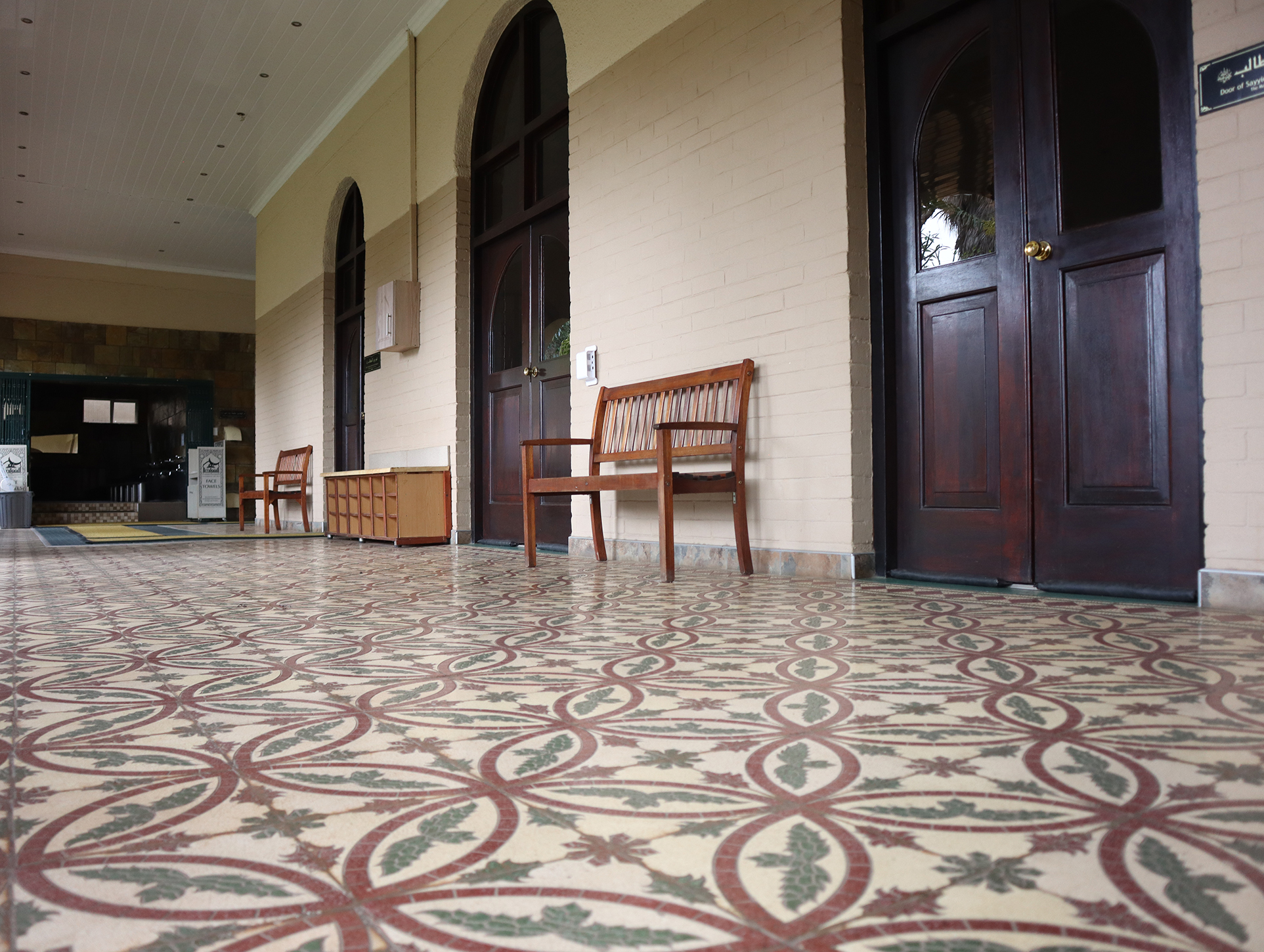 |
|
One of the most beautiful aspects of the mosque that was preserved was the original tiled outer floor. |
For the most part, the Louis Trichardt Town Masjid still exists in its original form as it was built. It still features its original architecture and even its original doors. Decades of wear and tear on the mosque did, however, necessitate some major renovations about five years ago. “Again, the local community contributed, and we had a local businessman, Shiraz Kalla, who took time off his work and spent a lot of time here supervising the renovations,” said Azim.
The renovations, among others, included replacing some of the rusted and worn fittings and fixtures. Other work done included a revamp of the ablution facilities, new ceilings, new carpets, new cladding, and new lighting. The entire mosque was also repainted. “We tried to preserve almost all of the original architecture,” said Azim.
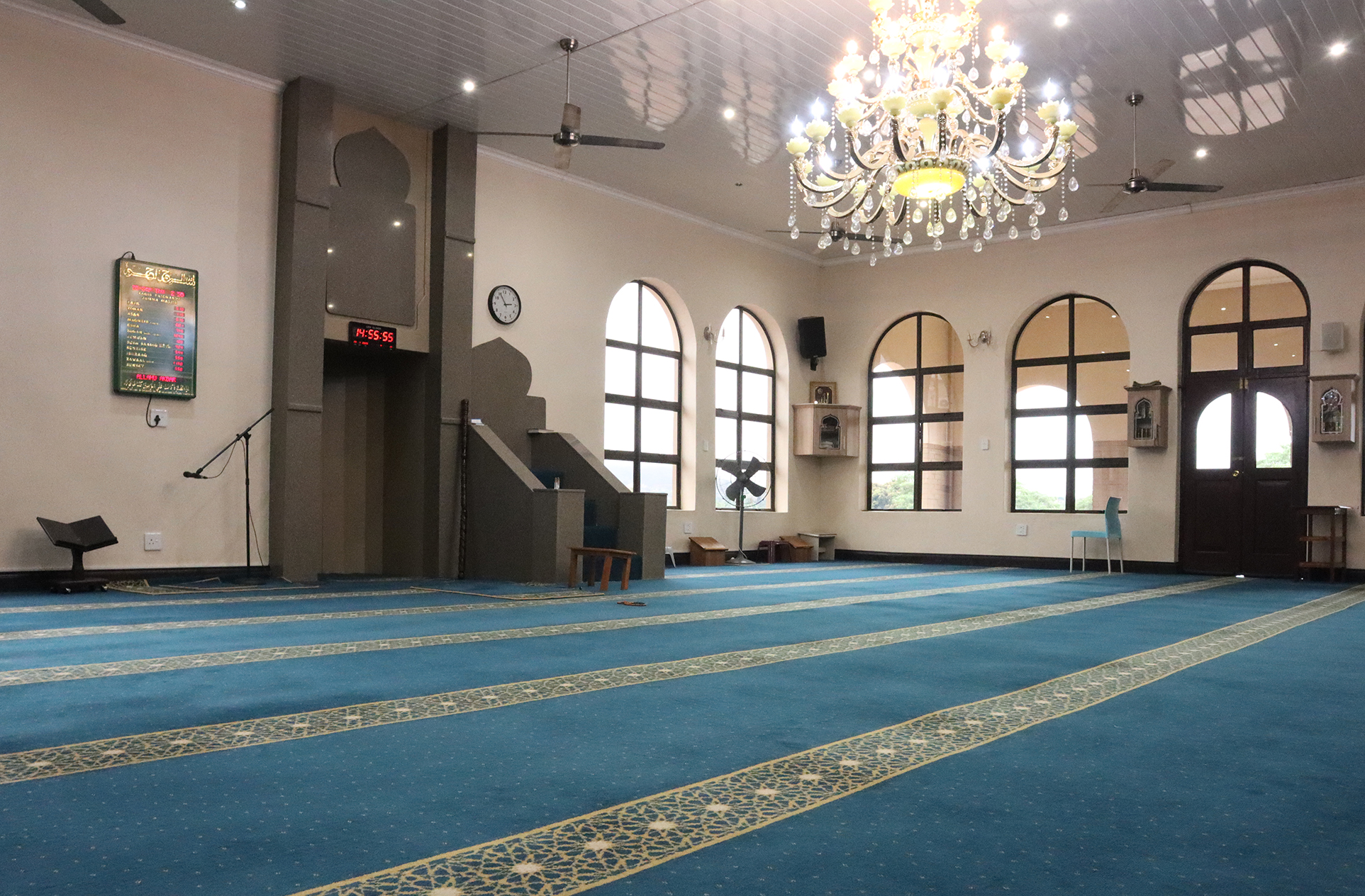 |
|
The rest of the work done included a revamp of the ablution facilities, new ceilings, new carpets, new cladding, and new lighting. They tried to preserve almost all the mosque’s original architecture. |
At present, the Louis Trichardt Town Masjid has its own resident Imam, with another Imam working on a rotational basis, mainly in Eltivillas at Masjid Al-Noor, which was built by the Noor family and opened in 1999 in 2nd Avenue. This mosque is now run and managed by the United Islamic Cultural Trust. The UICT is a Turkish organisation that runs mosques and Islamic schools (Madressas) globally.
Eltivillas is also home to Masjid Al-Ghausia and the First Street Jamaat Khana (a smaller congregational facility). “Two other organisations have established these and both the above entities have a team of dedicated people who work really hard at managing, running and maintaining these prayer facilities,” said Azim.
“I regret deeply that I didn't document what my dad and granddad told me about the mosque’s history. However, with time, I will scour through the archives and augment on this piece. I believe rather than hope that, over time, a more elaborate history of this rich heritage can be reconstructed and this effort will certainly honour the legacy of those phenomenal men who have passed on and, at the same time, enrich our future generations with a knowledge of this valuable heritage started by our forebears,” concluded Azim.
Viewed: 5567
|
|
Tweet |

-

Opwinding oor opgrawings in noorde van die Krugerwildtuin
27 July 2024 By Pétria de Vaal -

Ben se skielike dood kom as groot skok
26 July 2024 By Andries van Zyl -

Rotariërs maak bittersoet laaste skenking aan Bergcare
26 July 2024 By Andries van Zyl -

Raliphada finally gets appointed as CFO of Makhado
26 July 2024 By Kaizer Nengovhela -

RAL says work did not stop on busy R522 road
26 July 2024 By Andries van Zyl

Andries van Zyl
Andries joined the Zoutpansberger and Limpopo Mirror in April 1993 as a darkroom assistant. Within a couple of months he moved over to the production side of the newspaper and eventually doubled as a reporter. In 1995 he left the newspaper group and travelled overseas for a couple of months. In 1996, Andries rejoined the Zoutpansberger as a reporter. In August 2002, he was appointed as News Editor of the Zoutpansberger, a position he holds until today.

More photos...

ADVERTISEMENT


-

MMSEZ pushes for township development
12 July 2024 By Andries van Zyl -

Sheryl chosen again to represent Team SA at Paris Paralympics
12 July 2024 By Andries van Zyl -

Is Musina a gravy train for officials and councillors?
19 July 2024 By Anton van Zyl -

'Waterless' Vhembe causes problems for Phelophepa Health Train
27 June 2024 By Thembi Siaga -

Fuel company remains closed after SARS raid
18 July 2024 By Andries van Zyl

ADVERTISEMENT:


ADVERTISEMENT
